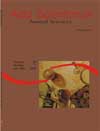<b>Effect of food restriction in spawning of yamú females <em>Brycon siebenthalae<em> (Osteichthyes, Characidae)</b> - DOI: 10.4025/actascianimsci.v27i2.1227
Abstract
Under natural conditions, many fish species, such as freshwater tropical reofilics, voluntarily restrict their food supply during the period before reproduction. Mature females fed with commercial food were divided in two groups four months before their reproduction period. One group was fed with 3% biomass/day of food, while for the other group food was restricted 50% of that amount. During two consecutive reproductive cycles females from both groups were induced to spawn, and the reproductive performance and visceral fat index were compared as well. Females from restricted treatment showed better results after hormonal injection and produced larger eggs after spawning, although the visceral fat index was significantly smaller (P < 0.05). The spawn weight, fertility and embryonic survivals were not different among groups during the two yearsDownloads
Download data is not yet available.
Published
2008-03-20
How to Cite
Arias Castellanos, J. A., Zaniboni-Filho, E., Pardo-Carrasco, S. C., Vasquez-Torres, W., & Atencio-Garcia, V. J. (2008). <b>Effect of food restriction in spawning of yamú females <em>Brycon siebenthalae<em> (Osteichthyes, Characidae)</b> - DOI: 10.4025/actascianimsci.v27i2.1227. Acta Scientiarum. Animal Sciences, 27(2), 235-239. https://doi.org/10.4025/actascianimsci.v27i2.1227
Issue
Section
Nonruminant Nutrition
DECLARATION OF ORIGINALITY AND COPYRIGHTS
- I Declare that current article is original and has not been submitted for publication, in part or in whole, to any other national or international journal.
The copyrights belong exclusively to the authors. Published content is licensed under Creative Commons Attribution 4.0 (CC BY 4.0) guidelines, which allows sharing (copy and distribution of the material in any medium or format) and adaptation (remix, transform, and build upon the material) for any purpose, even commercially, under the terms of attribution.
Read this link for further information on how to use CC BY 4.0 properly.
0.9
2019CiteScore
29th percentile
Powered by 








































